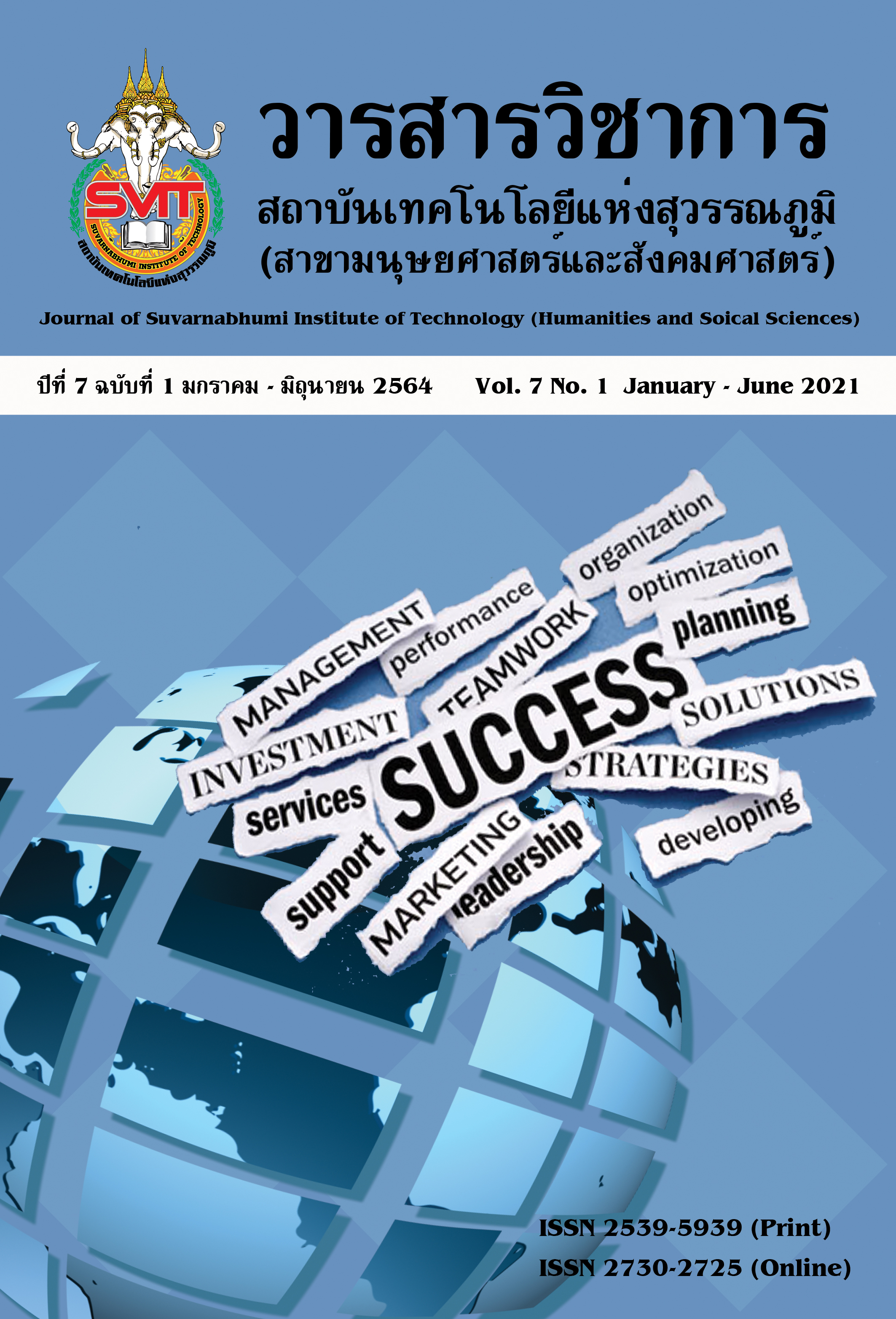CREATION OF INNOVATIVE ADMINISTRATION IN THE PUBLIC SECTOR
Keywords:
: innovative administration, public sector, innovative thinkingAbstract
The study titled Creation of Innovative Administration in the Public Sector was qualitative in nature. The needed data were derived from in-depth interviews with 14 key informants. The objectives of this study were threefold: 1) to investigate the factors influencing the creation of innovative administration; 2) to examine the process of creating innovative administration in the public sector; and 3) to determine the problems /obstacles and suggestions pertaining to the creation of innovative administration.
The researcher determined the relevant research methodology, namely the sample group who were chosen purposive sampling from those who were well-educated and relevant to the study, consisting of government executives, private administrators, academics, experts, lecturers in organizations that focus on innovation from government organizations that focus on innovation in organizational management. Tools used to collect information from key informants by semi-structured interview forms. The data were analyzed to create a conclusion. And checking the data by using the data triangulation method, which was seeking the reliability of data from different sources.
The data analysis has brought to light the following facts: The factors conducive to the success of the creation of innovative administration included the following: characteristics of leadership, direction and strategy geared up to the creation of innovation, the creation of atmosphere and culture favorable to learning, creating networks and knowledge management, creating the organizational structure conducive to teamwork on innovation and innovative thinking.
The process of creating the administration innovation consisted of three components: 1) the availability of innovative leaders, 2) setting the innovative vision, and 3) the creation of innovative personnel.
The process of creating the innovative administration can be arranged in another way. This included the following aspects: 1) Creative thinking to deal with problems and obstacles for the public good. 2) The availability of some projects that can be carried out by the established strategy and action plan along with the contribution of key performance indicators. 3) Program evaluation should be undertaken. And 4) The action plan should be reviewed on a continual basis.
With respect to the resolution of problems springing from the creation of innovative administration, the following actions should be pursued: streaming the work process in terms of human resource management, working phases, technology, regulations, clear-cut work procedures, making investment in creating good public employees, revising the system and the organizational structure on a continual basis and, decentralization of decision-making process.
Above all, the success of innovative administration depends on the contribution of 3 aspects: 1) It is a new thing involving the application of previous knowledge and research findings. 2) Putting the knowledge into practical use. And 3) It must be of great help to the socioeconomic development. In regard to the recommendations for creating the innovative administration in the public sector, it can be said that the creation of innovative administration should be balanced in character and should be based on 4 factors: effectiveness, efficiency, worthiness and flexibility.
References
กมลพร กัลยาณมิตร. (2559). แนวคิดและทฤษฎีทางรัฐประศาสนศาสตร์. กรุงเทพฯ: คณะรัฐศาสตร์ มหาวิทยาลัยกรุงเทพธนบุรี.
สำนักงานคณะกรรมการพัฒนาระบบราชการ. (2562). ข้อมูลศูนย์นวัตกรรมภาครัฐ. สืบค้นเมื่อ 15 กุมภาพันธ์ 2562, จาก https://www2.opdc.go.th/psic/main.php?
สุนันทา เลาหนันท์. (2553). การพัฒนาองค์การ (พิมพ์ครั้งที่ 3). กรุงเทพฯ: ดี.ดี. บุ๊คสโตร์.
สุภางค์ จันทวานิช. (2547). วิธีการวิจัยเชิงคุณภาพ (พิมพ์ครั้งที่ 12). กรุงเทพฯ: สำนักพิมพ์แห่งจุฬาลงกรณ์มหาวิทยาลัย.
Daft, R. L. (2012). New Era of Management. South-Western: Cengage Learning.
Luthans, Fred. (1995). Organizational Behavior (7th ed). New York: McGraw-Hill.
Rogers, E. M. (1983). Diffusion of Innovations. New York: The Fee Press, Rogers.
Downloads
Published
Issue
Section
License
บทความที่ได้รับการตีพิมพ์เป็นลิขสิทธิ์ของวารสารวิชาการ สถาบันเทคโนโลยีแห่งสุวรรณภูมิ
ข้อความที่ปรากฏในบทความแต่ละเรื่องในวารสารวิชาการเล่มนี้เป็นความคิดเห็นส่วนตัวของผู้เขียนแต่ละท่านไม่เกี่ยวข้องกับสถาบันเทคโนโลยีแห่งสุวรรณภูมิ และคณาจารย์ท่านอื่นๆในสถาบันฯ แต่อย่างใด ความรับผิดชอบองค์ประกอบทั้งหมดของบทความแต่ละเรื่องเป็นของผู้เขียนแต่ละท่าน หากมีความผิดพลาดใดๆ ผู้เขียนแต่ละท่านจะรับผิดชอบบทความของตนเองแต่ผู้เดียว





